We’ve taken an extremely thorough look at the first Zelda game… but there’s still even more to check out outside of the game itself.
Different Versions
The first Zelda game has been released in many forms – some you may never have known about.
Famicom Disk
The game was first released for the Famicom Disk System, and here’s what the whole set looked like:
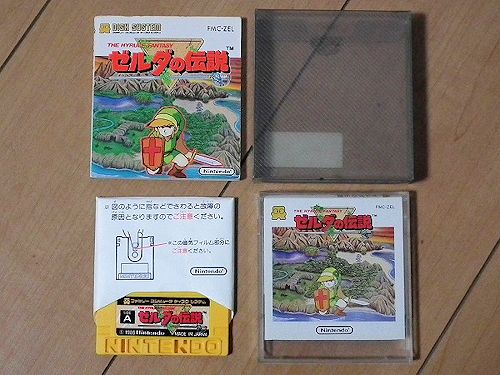 |
At some point in time you could also take a blank Famicom disk to participating stores and have them put Famicom Disk System games on it for a small fee.
 |
If you did it this way, you obviously wouldn’t get the case, color instructions, stickers, and all of that nice stuff that the main release got. But you WOULD get a simplified, mostly black-and-white manual like this one:
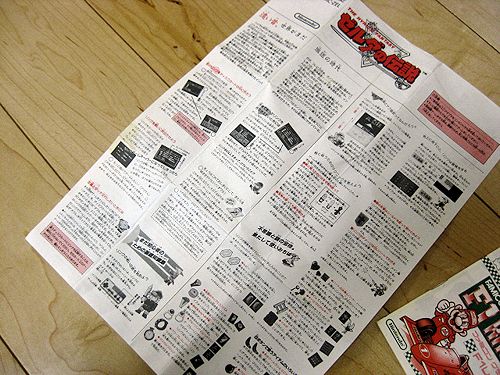 |
The Disk System was never released in America, so I guess the closest thing we had at the time were video rental stores that also rented out games.
While we’re at it, here’s the advertisement that was used to promote the Famicom Disk System and Legend of Zelda:
 |
Technically, there seem to be two different versions of Zelda for the Famicom Disk System – version 1.0 and version 1.1. I assume 1.1 fixes some bugs or something, but I don’t really know for sure.
If anyone out there knows what the differences between version 1.0 and 1.1 are, please let me know!
Famicom Cartridge
As mentioned before, the Japanese version of Zelda was released in cartridge form in 1992. It seems it was very much like the NES version in terms of sound and graphical changes. The text was in Japanese, of course.
Here’s what the full set looked like:
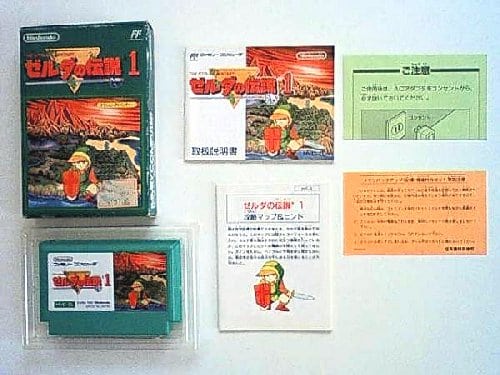 |
Charumera Release
A special and very rare version of the game was also released as a promotion for Charumera-brand ramen:
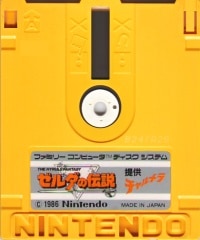 |
Now for a little backstory. Charumera ramen often comes in fancy packaging like this:
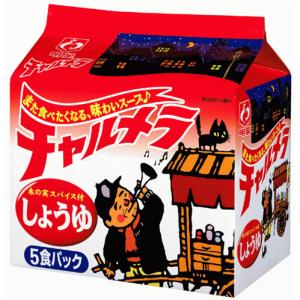 |
The special Charumera version of Zelda was never for sale – only a few lucky contest winners got it. Included in the prize was the special copy of Zelda, an interesting carrying case that could carry a Famicom Disk System (and presumably a Famicom), and possibly more.
 |
 |
 |
Anyway, for obvious reasons, this version of the game sells for a lot, even more so if the full prize set is included. If you can find a copy, be prepared to shell out a ton of money!
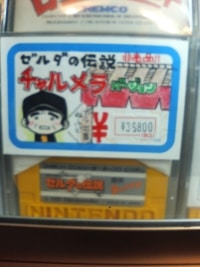 |
Now comes the big question – what about this version of the game is different from the standard version?
The answer, after many years of hunting for information: there is no real difference. Tech-minded fans compared a Legend of Zelda Charumera prize disk with the standard retail disk, and the two turned out to be a 100% digital match with each other.
NES Gold Cartridge
This is the version probably most Americans know and love! This was the first NES game to have a battery inside to allow game data to be saved and reloaded at any time. No tedious passwords this time around!
 |
There are many different revisions of this release. I’m not familiar with all the minute differences, but probably some of the main changes were related to the save screen (as we saw here).
NES Gray Cartridge
This was basically the same version as the gold cartridge (at least to my knowledge) and was re-released as part of the “Classic Series” around 1994 or so. These are actually a lot rarer than the gold ones, but the gold copies tend to sell much better on eBay and elsewhere.
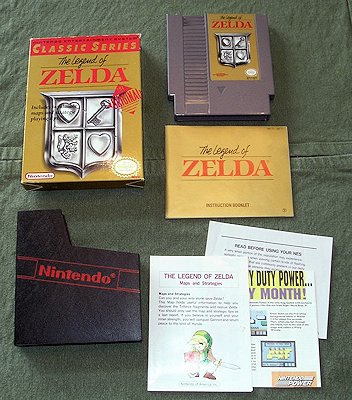 |
For reference, the gold version doesn’t have a trademark symbol on the title screen while the gray version does:
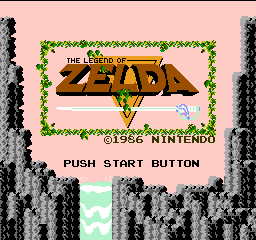 | 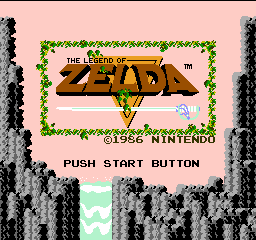 |
| Gold Version | Gray Version |
Wristwatch
I guess this technically isn’t the same game, but a wristwatch version of Zelda was also released in the late 80s/early 90s:
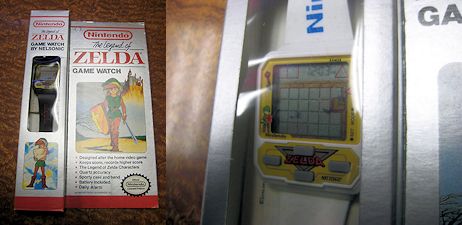 |
I haven’t played this one much, although I do remember being amazed when a friend showed me one he had during recess or something. I couldn’t tell what exactly you were supposed to do, all I remember was that it all took place inside a dungeon or something.
Game & Watch
The Game & Watch games were still alive and kicking at this time, so it’s natural that a Zelda Game & Watch was made. I believe it was released in both Japan and North America, I’m not sure about elsewhere.
 |
I’m not really sure how this game played or what the story was or anything, though.
BS Zelda
A special Super Famicom accessory known as the Satellaview was released in Japan in the 1990s. This allowed players to download games and various types of media via satellite.
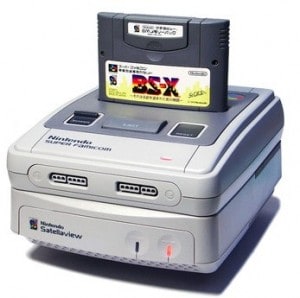 |
One of the games available via the Satellaview system was “BS Zelda”, which was an upgraded, 16-bit port of the original Zelda game. If you’re snickering at the “BS” in the title, just know that it’s there because “BS” is a common acronym in Japan for “broadcast satellite”.
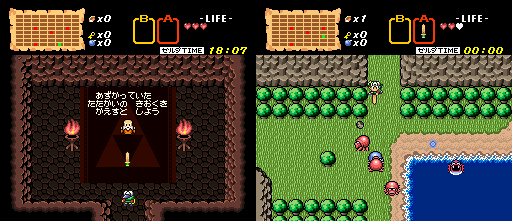 |
Anyway, BS Zelda was a bit of an oddity. Here were some of the new features:
- Link was replaced with a generic boy or girl, depending on the gender specified by the player’s Satellaview account settings
- A timer system was implemented, allowing you to play for a certain amount of time only
- Real-time voice acting was implemented, using actual voice actors in a sort of “live radio broadcast” format
- The game was split across multiple broadcasts, so you’d need to wait for later broadcasts to be able to access some dungeons
- Multiple maps/quests
- No more 255 rupee limit
A very strange experiment, indeed! If you’re interested in learning more, check this page out!
Mini Classics
In 1998, a port of the Game & Watch Zelda was released on a super-small LCD system:
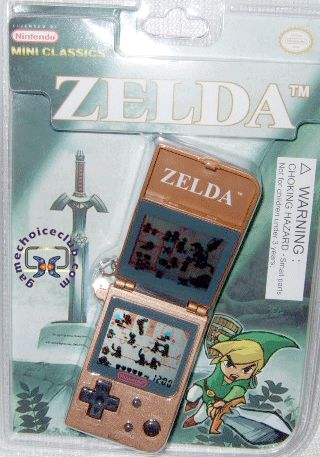 |
(Don’t mind the weird packaging, I’m pretty sure this is a more recent repackaging)
If you’re interested, here’s a video of it in action!
Animal Crossing game
In the GameCube version of Animal Crossing, you could collect NES games that were actual, playable copies of the original games. The Legend of Zelda was among these NES games, but it was never normally accessible. You had to cheat to get it. But it was there:
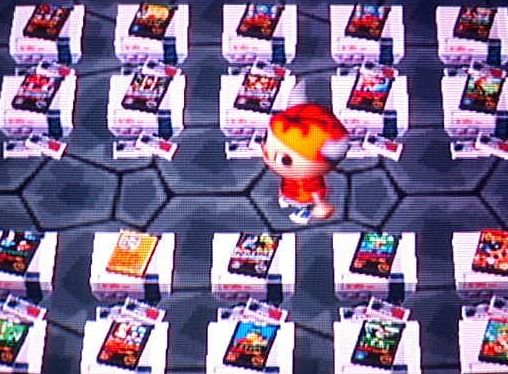 |
Famicom Mini/Classic NES Series (Game Boy Advance)
The Legend of Zelda was ported to the Game Boy Advance and released in 2004.
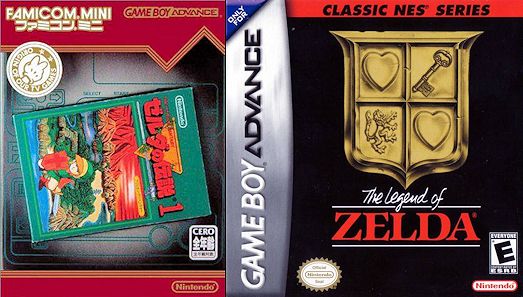 |
We’ve already explored some of the differences between the GBA versions and the original versions, but the biggest changes were:
- Squished graphics
- Some text fixes
- The Japanese version included a unique way of defeating Pols Voices
The Legend of Zelda Collector’s Edition
This was a special GameCube disc released in 2003. It contained a demo of Wind Waker as well as fully-playable versions of four earlier Zelda games, including the original Zelda game. This version seems to have the fixes and changes found in the GBA release.
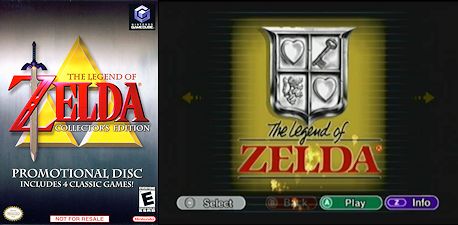 |
Virtual Console
The original Zelda game was also re-released on Nintendo’s Wii Virtual Console. This version is apparently based on the GBA release.
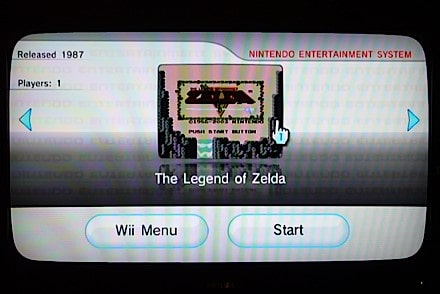 |
Also, apparently the Virtual Console release slowed down the screen flashing that happens when you pick up the Triforce (Virtual Console version – original version), assumedly to prevent seizures. Other Virtual Console games that had screen flashing like this were similarly changed, not just Zelda.
3DS
The first Zelda was also released on the Nintendo 3DS eShop. I’m told it’s a straight copy of the NES version. The Japanese manual for this version also removes the references to Pakkun Flowers and Unira in the enemy descriptions:
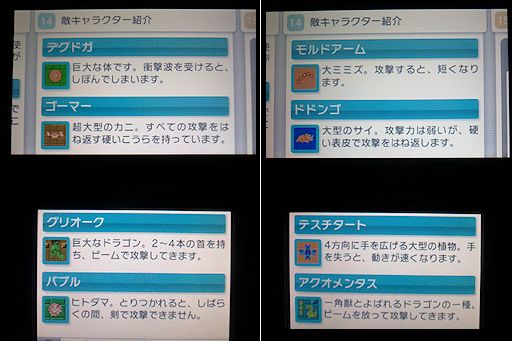 |
Guides
For many gamers, game guides play a big part in the overall experience of a game. So let’s take a brief look at the Zelda guides gamers in Japan and America had at their disposal.
Japanese Guides
Simply put, Japan had zillions of different guide books for the first Zelda game. It’s really quite something. There were so many that I can’t even keep count anymore. Here’s just a small taste:
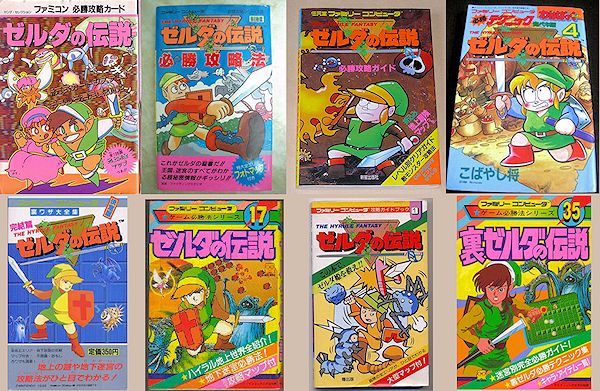 |
American Guides
America, on the other hand, seemed to have very few guides. Most players either relied on Nintendo Power magazine issues or picked up the Tips & Tactics guide that Nintendo published itself (by translating existing Japanese guides) and advertised in Nintendo Power:
 |
I actually bought the Tips & Tactics book myself with my allowance money, hoping to get all the heart containers. When it came in the mail I was able to find the last piece I needed. But the weird screenshots with text blurred out left me with new questions and eventually culminated in this analysis site.
There were also a few pages of Zelda information in “The Official Nintendo Player’s Guide”, but I almost wouldn’t even call it a guide. It’s just four pages of maps.
Anyway, it’s interesting to see how Nintendo sort of kept a tight grip on the Zelda game guides outside of Japan.
I’m sure there were other guides released in America too, so if you know of any let me know. But it seems that Nintendo Power and the Tips & Tactics guide were the main ones here.
Commercials
A big part of my old Zelda memories has to do with the absolutely bizarre commercials Nintendo made. So let’s take a look at some of the commercials that were made for Japan and America and see how they differed!
Famicom Disk System commercial #1
Japanese commercials were a lot less crazy back in the 80s – many times they were just nice and simple and to the point, like with this promo video about the Famicom Disk System. I’ve added English subtitles for your viewing pleasure:
It seems this was just a small part of a much larger promo video, which included an animated version of the manual’s story and a bunch of other stuff:
Famicom Disk System commercial #2
Next is a more standard commercial that features a TV personality and a cute little girl. It seems they were using the “Famicom Disk System games are so much more massive and thus more difficult than ever” angle here.
NES Zelda commercial #1
Now we have the infamous Zelda rap commercial that aired in America. If you’ve read this far, then this probably needs no introduction! I love the cheesiness of 80s kids TV!
NES Zelda commercial #2
And now we come to the truly insane American commercial featuring a mentally ill man. Now that I’m grown up, I hope I haven’t turned out like him…
Zelda cereal commercial
There’s no way I can skip the commercial for the Zelda breakfast cereal!
Truth be told, I probably only bought this cereal once or twice. I can’t recall anything about it at all, though. It’s a shame. But who knows, maybe there are some unopened boxes still out there just waiting for someone to try after all this time.
- A more detailed look at the history of the various Zelda NES/Famicom releases, including exact release dates, release prices (and their modern adjusted equivalents), and package contents
- Information on the two different Famicom Disk System versions
- Further information about the FDS rewriting system
- Much more detailed and accurate information about the Charumera promotion, including photos and a large advertisement
- Japan’s Zelda color scheme vs. other countries’ Zelda color scheme, with multiple examples
- More information on the prototype FDS versions that have leaked
- Info on two very different yellow Zelda NES cartridges + their history
- More details about the Japanese Super Famicom Satellaview Zelda spinoff
- A comparison of the Japanese Zelda board game with the North American Zelda board game, complete with lots of photos
- More info and history about the other spinoff games, such as the LCD wristwatch game, the Game & Watch release, the Mini Classics version, and more
- Japanese Zelda guides and magazines vs. North American Zelda guides and magazines
- Japanese Zelda commercials vs. North American commercials
- A brief look at the North American Zelda cereal and cartoon series







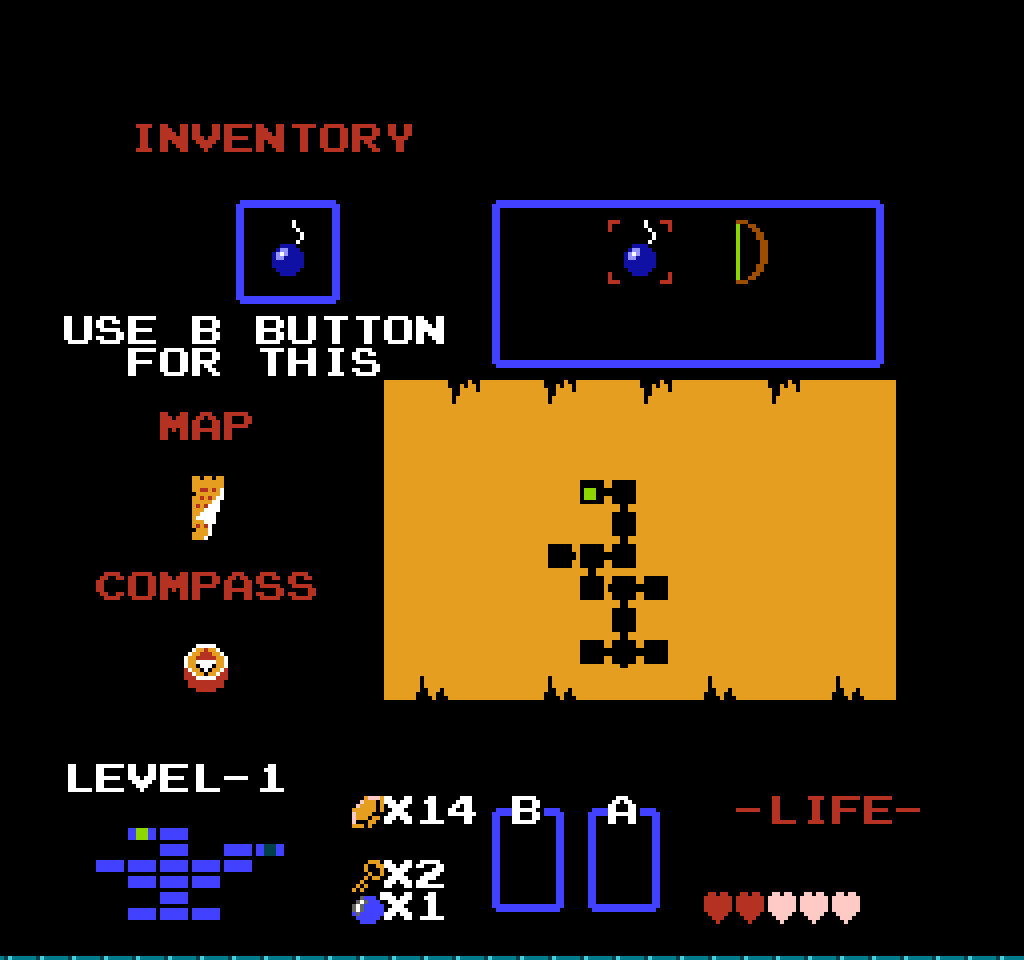
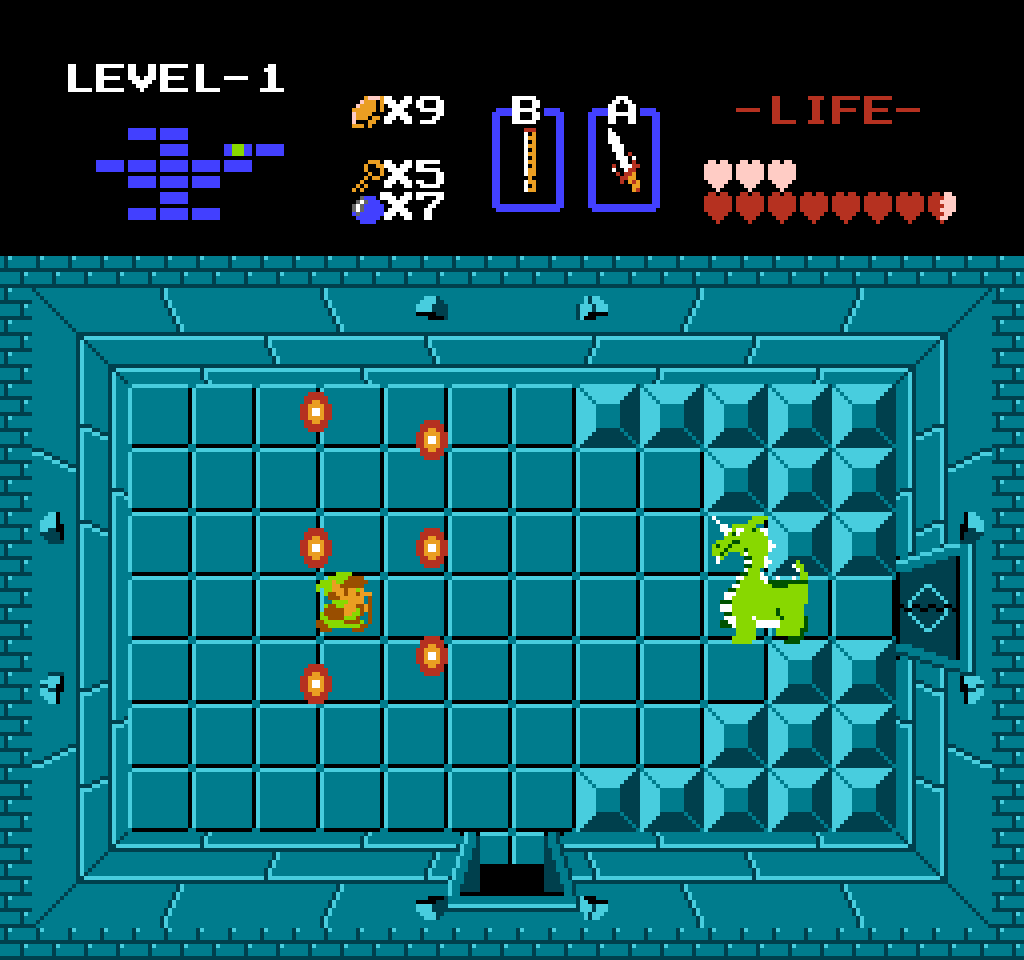
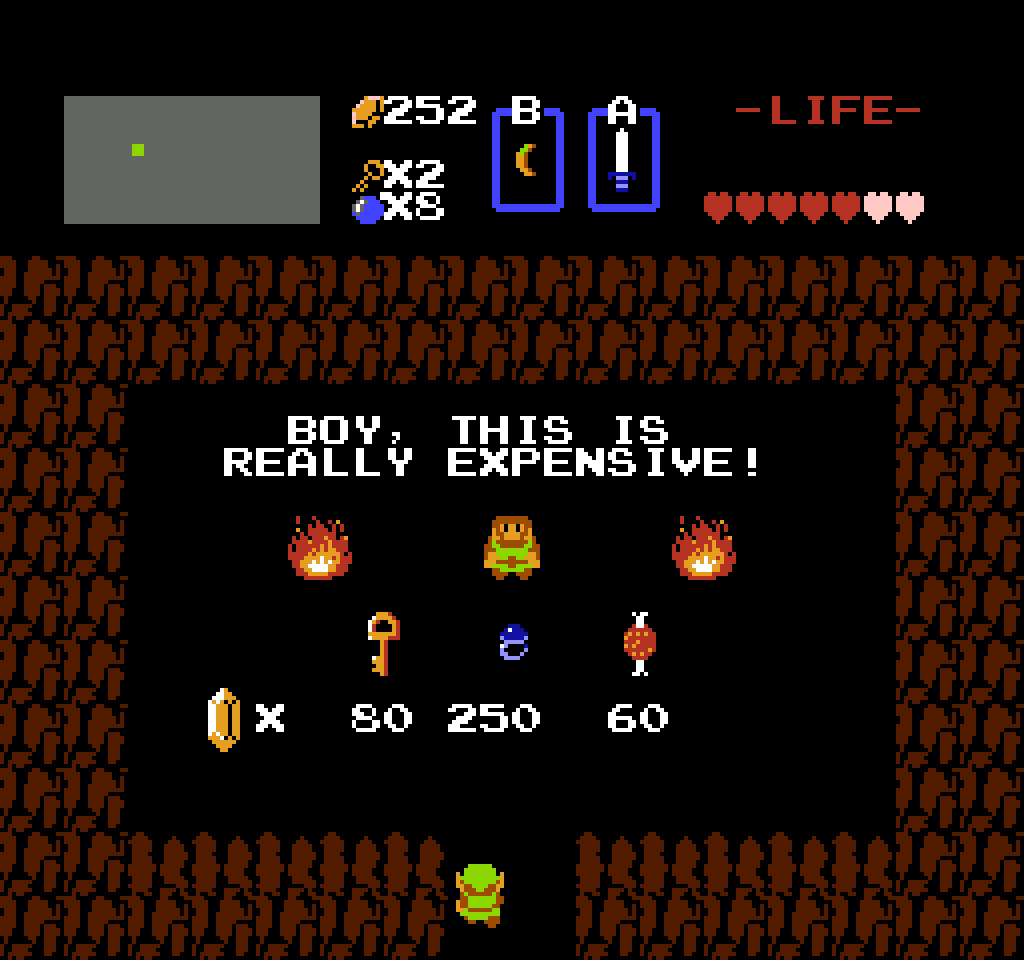
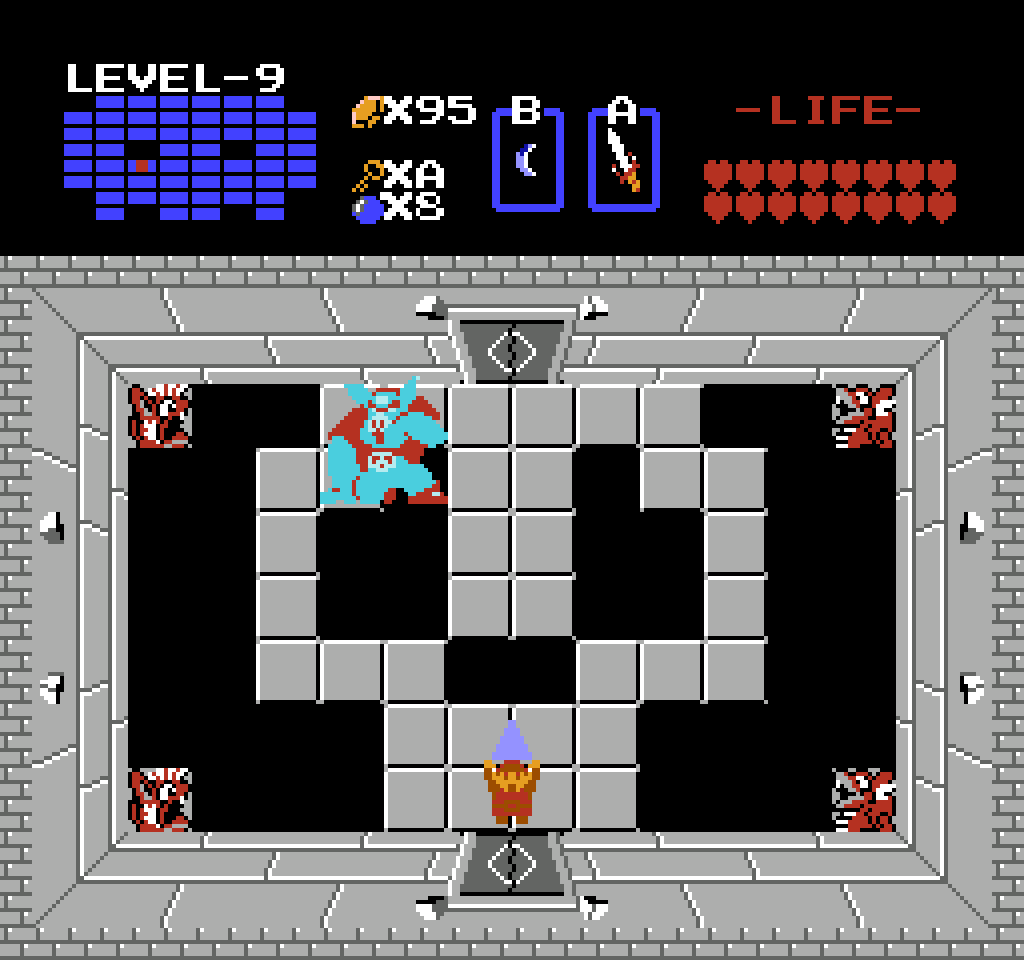

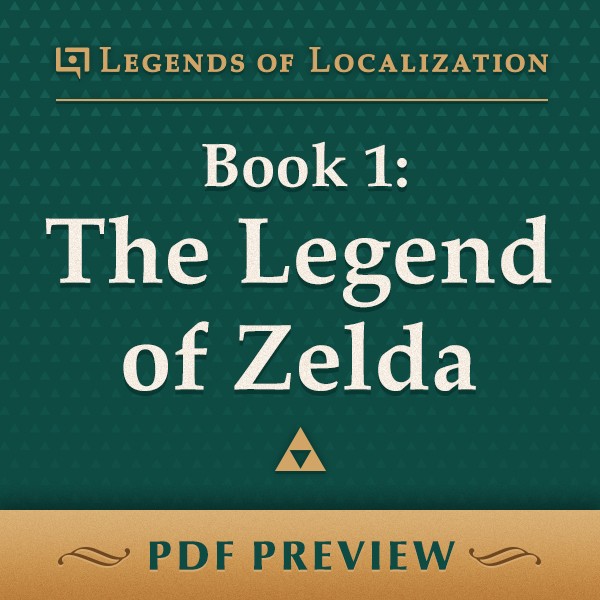
No Comments